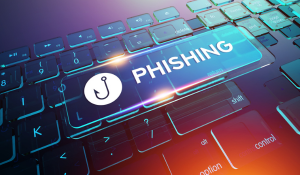 Phishing attempts have become a rising concern for organizations in recent years, with examples of stolen identities, credit card numbers, and sensitive information increasing on a regular basis. To compound the problem, phishing assaults will continue to be the most popular method of cyber-attack in 2023, necessitating organizations immersing themselves in the world of phishing in order to understand common phishing attacks and how to prevent them.
Phishing attempts have become a rising concern for organizations in recent years, with examples of stolen identities, credit card numbers, and sensitive information increasing on a regular basis. To compound the problem, phishing assaults will continue to be the most popular method of cyber-attack in 2023, necessitating organizations immersing themselves in the world of phishing in order to understand common phishing attacks and how to prevent them.
This is also a concern for organizations in the social services sector. Unfortunately, the fact that they work with vulnerable populations does not preclude them from these in dishonest attacks.
Common Phishing Attacks and How to Prevent Them
We will look at three prevalent phishing attempts and how social service organizations may help their employees avoid becoming victims.
Whaling
Whaling is a significant worry for businesses; this phishing method primarily targets employees, ranging from senior management to executives. If whale assaults are successful, fraudsters may be able to gain the login details of an organization's top executives. The goal of whaling, also known as CEO fraud, is to disguise themselves as these executives or trusted entities and to trick their intended target or targets into giving money, additional information, or access to a company's network or system through the use of emails, calls, texts, or website spoofing.
Fortunately, there are methods to counter whaling attacks. One of the most effective approaches is to organize security awareness training programs to enable corporate employees and executives to become aware of these phishing attempts and how to avoid them.
Furthermore, comprehensive email security measures and multi-factor authentication are exemplary methods to guard against whaling attacks.
Deceptive Phishing
Deceptive phishing is another common type of phishing where fraudsters pose as a legitimate business to secure people's personal information, like login credentials. Deceptive phishing emails take advantage of people by creating a feeling of urgency to intimidate those targeted into doing whatever the fraudsters demand.
For example, fraudsters often attempt to avoid detection by email filters by creating a realistic phishing email. They might include the contact details and logos of a business they might be impersonating.
To avoid becoming a victim of deceptive phishing attempts, one should carefully examine links to see if they redirect to malicious websites. You can also discover these URLs by looking for spelling issues, generic salutations, and grammatical flaws. One of the best tips is to never log onto a website from the email. Go to a browser and type in the actual address to access the site and your information.
Spear Phishing
Fraudsters use spear phishing to deceive recipients into thinking they know the person who sent it by customizing their emails with the targeted individual's contact data, position, name, company, and other facts. The aim of spear phishing is the same as that of deceptive phishing — to persuade the victim to click on an attachment or URL and provide personal information.
Since a phishing attack requires the attacker to obtain detailed information on the target, it tends to occur on social networking platforms such as LinkedIn, where fraudsters can obtain information about a victim from their profile and use it to create a spear phishing attack email.
To avoid becoming a victim of spear phishing, firms must utilize spear phishing protection solutions that work by analyzing emails for deceptive email attachments and URLs. These solutions may effectively assist businesses in detecting emails containing spear phishing techniques. Furthermore, tailored social media protection tools might be an excellent technique to search for threats on platforms like LinkedIn.
Conclusion
Increasing employee awareness of phishing attacks and discussing the above-mentioned preventative actions can help organizations protect themselves from phishing efforts. We firmly believe educating your team is a great defense against phishing attacks. It's one of many of our preventive measures here at GVT. We are continually educating our team to ensure that the many social service agencies both governmental and non-profit that we serve remain safe!
-May-09-2023-07-20-21-1172-PM.png?width=300&height=175&name=Untitled%20design%20(6)-May-09-2023-07-20-21-1172-PM.png)
Recommended Reading from the FAMCare Blog:
How to Improve Cybersecurity for Your Non-Profit
Why Social Workers Are Vulnerable to Privacy Breaches and What You Can Do About It
3 of the Best Tips and Practices to Keep Nonprofit Data Secure


